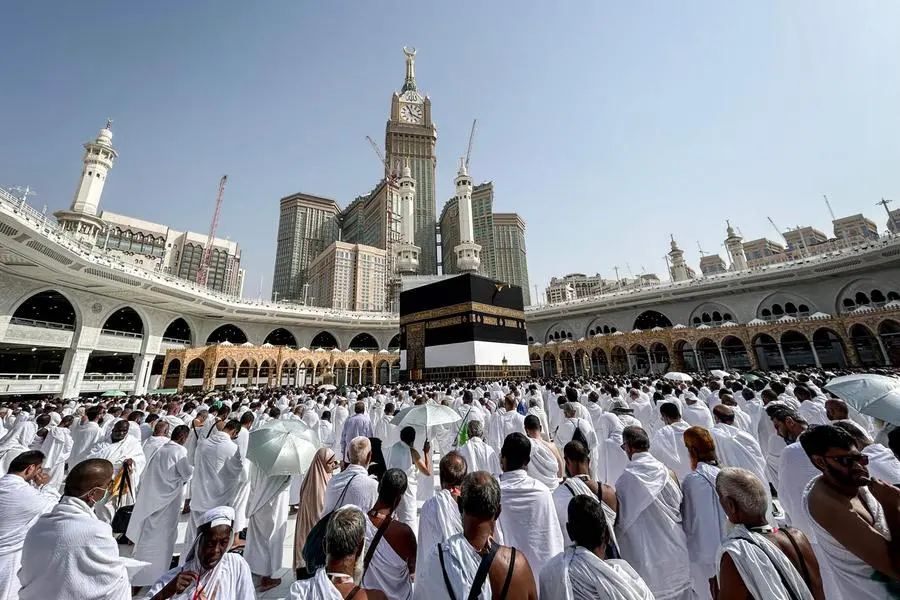Embarking on the spiritual odyssey to Mecca – what every Muslim should know about the Hajj.
The Hajj, an annual pilgrimage to Mecca in Saudi Arabia, holds immense significance as one of the most profound acts of worship for Muslims around the globe. It represents the fifth pillar of Islam, a duty that every able-bodied Muslim who has the means must undertake at least once in their lifetime. Beyond being merely a physical journey, the Hajj embodies a deeply spiritual experience, showcasing faith, unity, and submission to God.

For countless individuals, the journey to Hajj signifies the peak of years spent saving, organising, and yearning. It serves as a period of profound contemplation, remorse, and the pursuit of forgiveness. The ceremonies carried out during Hajj are rich in history and meaning, originating from the era of Prophet Ibrahim (Abraham) and his family, and later reinforced by Prophet Muhammad (peace be upon him).
The immense magnitude of the Hajj is truly breathtaking.
Countless pilgrims from all around the world gather in Mecca, clad in plain white attire (ihram), rising above distinctions of social class, nationality, and affluence.
This striking image of solidarity and equality stands out as one of the most impactful features of the pilgrimage, nurturing a deep sense of camaraderie among the faithful.
In addition to its spiritual significance, the Hajj serves as a profound reminder of the deep-rooted heritage of Islamic tradition and the unity of the worldwide Muslim community. This pilgrimage is a transformative experience that revitalises individuals’ faith and strengthens their bond with God.
2020: The Hajj faced significant limitations due to the COVID-19 pandemic. Only a small group of pilgrims (between 1,000 and 10,000) who were residents of Saudi Arabia were permitted to undertake the pilgrimage. International pilgrims were not allowed.
2021: Like in 2020, the Hajj continued to be restricted because of the pandemic. About 60,000 pilgrims, all of whom were residents of Saudi Arabia, were granted permission to take part.
2022: Saudi Arabia raised the cap on pilgrims, allowing around 1 million participants, with a notable number being international pilgrims for the first time since the onset of the pandemic.
2023: The Hajj experienced a significant surge in attendance, reaching about 1.8 million pilgrims, approaching pre-pandemic figures.
2024: The total count of pilgrims for Hajj 2024 was 1,833,164, which included 221,854 domestic pilgrims and 1,611,310 international pilgrims.
2025: Although the final count is not yet confirmed as Hajj 2025 is set for June, estimates suggest it could surpass 2.5 million pilgrims, potentially marking the largest Hajj in history. Saudi Arabia is gearing up for unprecedented numbers as global travel restrictions have been lifted.
The years 2020 and 2021 marked an unprecedented period for the Hajj, drastically impacted by the global COVID-19 pandemic. In 2020, attendance was severely limited to approximately 1,000 to 10,000 residents of Saudi Arabia, with no international pilgrims allowed. This drastic measure was taken to ensure public health and safety amidst the pandemic’s peak. The following year, 2021, saw a slight increase, but the pilgrimage remained restricted to around 60,000 domestic pilgrims, highlighting the continued caution exercised by Saudi authorities. These two years represent a stark departure from the typical millions who undertake the Hajj annually, showcasing the extraordinary circumstances the world faced.
As the global health situation improved, 2022 marked a significant step towards normalcy, with the number of pilgrims increasing to about 1 million, including a return of international visitors. This was a welcome sight for many, signaling the gradual reopening of the sacred journey. The upward trend continued robustly into 2023, with approximately 1.8 million pilgrims attending, demonstrating a strong rebound towards pre-pandemic figures.
The momentum continued into 2024, which saw a recorded 1,833,164 pilgrims, with a vast majority (1,611,310) coming from outside the Kingdom. This figure solidified the return of Hajj to its massive scale, though still slightly below the peak attendance seen in some years before the pandemic. Looking ahead to 2025, the outlook is even more optimistic. Projections indicate that Hajj 2025, which is scheduled for June, could potentially be the largest in history, with expectations to exceed 2.5 million pilgrims. This anticipated record-breaking attendance reflects the easing of all remaining travel restrictions and the immense global yearning to fulfill this fundamental pillar of Islam. Saudi Arabia is actively preparing its infrastructure to accommodate this significant influx, aiming to ensure a smooth and safe experience for all pilgrims.








